Tokyo, a sprawling metropolis with a unique blend of ancient traditions and modern innovation, offers a diverse range of experiences for visitors. With 23 wards, each boasting its own distinct charm, choosing the right neighborhood can significantly enhance your stay. To help you make an informed decision, we’ve curated a guide to the most popular areas in Tokyo for 2024, considering the latest trends and attractions.
1. Shinjuku
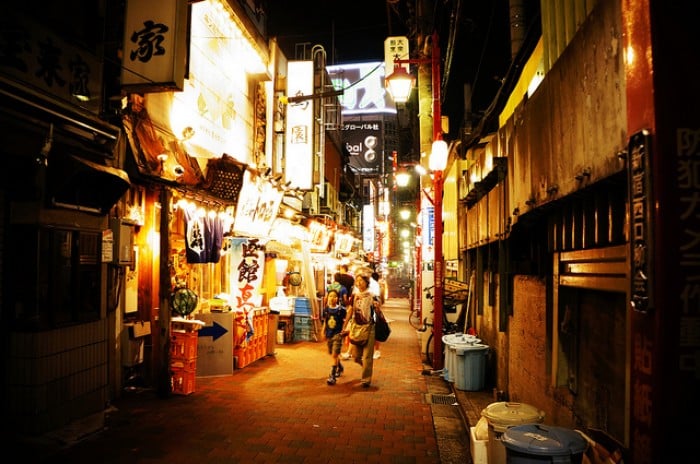
Image credits: shiranai | Flickr
Shinjuku remains a top choice for first-time travellers to Tokyo, offering a dynamic mix of culture, entertainment, and convenience. Its prime location on the JR Yamanote Line ensures easy access to major attractions and neighbourhoods. From towering skyscrapers and bustling shopping districts to serene parks and historic temples, Shinjuku has something to offer everyone.
Things to Do:
- Panoramic Views: Enjoy breathtaking views of Tokyo, including Mount Fuji, from the Tokyo Metropolitan Government Building‘s observation decks.
- Nature and Culture: Explore the tranquil beauty of Shinjuku Gyoen National Garden and the historic Meiji Jingu Shrine.
- Family Fun: Delight in interactive experiences at the Ninja Trick House and Tokyo Toy Museum.
- Shopping and Dining: Discover unique finds in the charming streets of Kagurazaka and Omoide Yokocho.
- Nightlife: Immerse yourself in the lively atmosphere of Golden Gai, a historic alleyway filled with quaint bars and restaurants.
Cons:
While the eastern part of Shinjuku, Kabukicho, is known for its vibrant nightlife, it may not be suitable for all travellers. With its numerous hostess bars, nightclubs, and massage parlours, it can be overwhelming for families or those seeking a quieter atmosphere.
Transport:
Shinjuku is well-connected with multiple transportation options, including Shinjuku Station, Shinjuku Bus Terminal, and the Narita Express train for easy access to Narita International Airport.
2. Takadanobaba
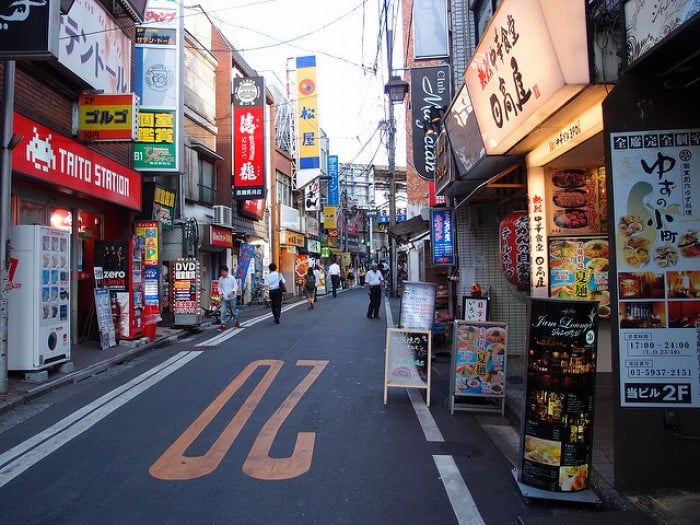
Image credit: Guilhem Vellut | Flickr
Next to Shinjuku is Takadanobaba, a neighbouring district that offers a more affordable and vibrant atmosphere, especially for budget-conscious travellers. As a university town, it caters to students from Waseda University, providing a lively and youthful vibe. Enjoy cheap eats, lively bars, and karaoke spots, all within a stone’s throw away.
Things to Do:
- Nature and Tranquility: Escape the city’s hustle and bustle at Hotel Chinzanso’s Tokyo Garden, Mejiro Garden, or Kishimojin Shrine.
- History and Culture: Immerse yourself in Japanese history at the Samurai Museum or the Philatelic Museum.
- Pop Culture: Experience the world of Pokémon at the Pokémon Mega Center Tokyo.
- Nightlife: Enjoy delicious izakaya cuisine at Manaita, Kuriya, or Tofuro, or dance the night away at Takadanobaba Club Phase.
Cons:
Even though Takadanobaba’s student-friendly atmosphere is a major draw, it can also come with some downsides. The area can be noisy, especially during peak hours, and the dining options are primarily focused on budget-friendly choices. If you’re seeking upscale fine dining or high-end shopping, you may need to venture elsewhere.
Transport:
Takadanobaba is conveniently served by Takadanobaba Station, providing easy access to other parts of Tokyo.
3. Ginza
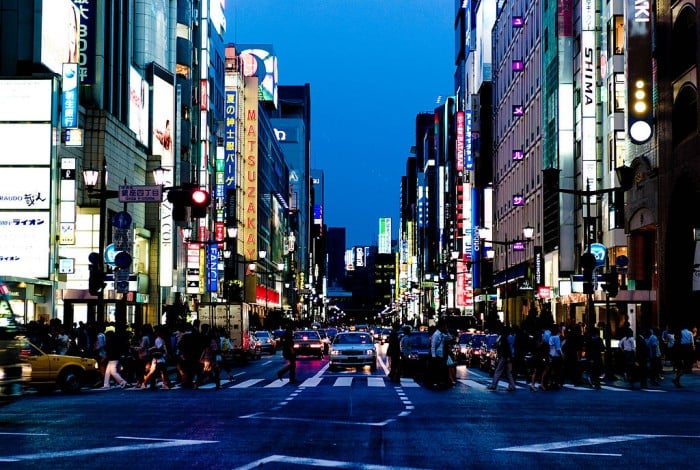
Image credit: Joi Ito | Flickr
Ginza, a prestigious district in central Tokyo, offers a more refined and upscale experience compared to Shinjuku or Takadanobaba. Despite its elegance, Ginza retains a charming Japanese atmosphere and is less crowded than some other tourist hotspots. With a diverse range of dining options, from high-end restaurants to affordable ramen shops, Ginza caters to various tastes and budgets.
Things to Do:
- Fresh Seafood: Indulge in the freshest sushi and sashimi at the iconic Tsukiji Fish Market.
- Cultural Experiences: Immerse yourself in Japanese traditions at the Kabuki-za Theatre, Hamarikyu Gardens, Hibiya Park, and the Imperial Palace.
- Shopping: Discover the latest fashion trends at Ginza Chuo-dori and Pedestrians’ Paradise, or explore beauty products at Shiseido the Ginza and Laox.
- Nightlife: Enjoy themed cocktails at The Iron Fairies Ginza, experience the Showa period at Lupin, or unwind with casual drinks at Bar Musashi.
Cons:
Since Ginza offers a more luxurious experience, it naturally comes at a higher price tag compared to other neighbourhoods. Additionally, it’s not directly on the JR Yamanote Line, requiring a short transfer at Yurakucho or Ueno stations.
Transport:
Ginza is well-connected by the Ginza Metro Subway, providing easy access to the JR Yamanote Line. For travellers arriving at the airport, Ginza is accessible by airport shuttle buses. Tokyo Station, with its extensive transportation options, including bullet trains and buses, is just a short stop away.
4. Shibuya
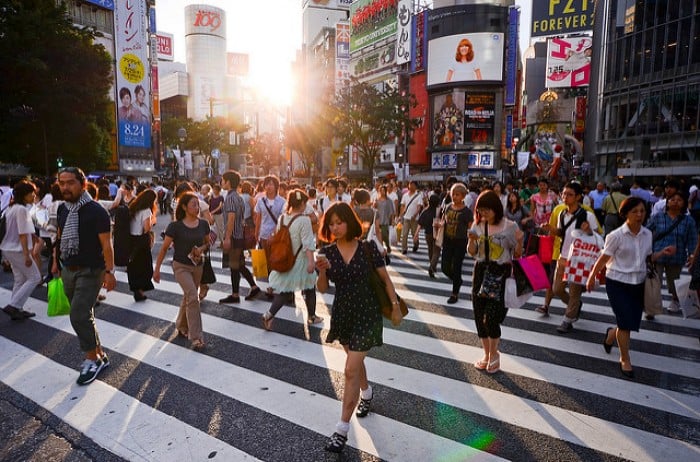
Image credit: Candida.Performa | Flickr
Shibuya is generally a vibrant district known for its youthful energy and cutting-edge trends. Needless to say, it is one of the must-visit destinations in Tokyo. Renowned for its iconic pedestrian crossing, Shibuya offers a unique blend of shopping, dining, and nightlife.
Things to Do:
- Fashion and Culture: Explore the world of Japanese fashion at Harajuku, Shibuya 109, and Omotesando. Discover unique fashion trends and vibrant street styles.
- Green Oasis: Relax in the picturesque Yoyogi Park, a popular spot for cosplayers, fashionistas, and locals alike.
- Shopping and Dining: Discover a wide range of shops and restaurants along Center Gai, Koen Dori, and Spain Slope.
- Nightlife: Experience the vibrant nightlife scene with world-class clubs like Atom Tokyo, Sound Museum Vision, and Harlem. For those seeking even more excitement, venture to nearby Roppongi, known for its late-night party scene.
Cons:
While Shibuya offers a thrilling experience, it can be more expensive compared to other neighbourhoods like Takadanobaba or Akihabara.
Transport:
Shibuya is well-connected with Shibuya Station, providing direct access to Ginza and various other parts of Tokyo. For travellers arriving from Narita Airport, Shibuya is easily accessible by both the Narita Express train and airport shuttle buses.
5. Ikebukuro
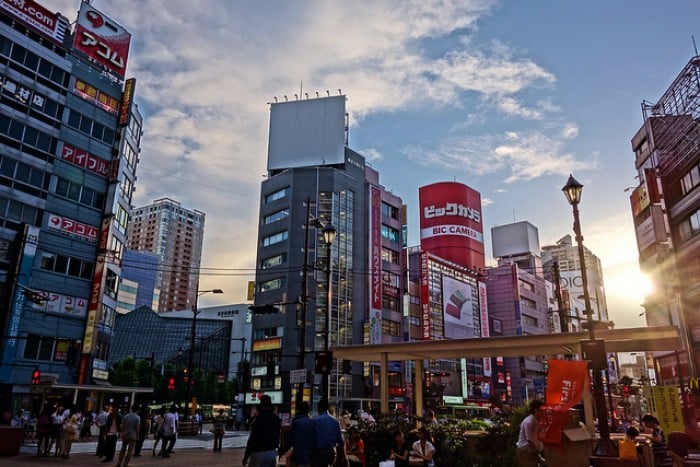
Image credit: namhdyk | Flickr
Ikebukuro offers a similar mix of shopping, dining, and entertainment as Shinjuku and Shibuya, but with a more local-friendly atmosphere. Unlike its more touristy counterparts, Ikebukuro is primarily frequented by Japanese residents, making it a great choice for those seeking an authentic Tokyo experience. The district also offers more affordable accommodation options compared to other popular areas.
Things to Do:
- Anime and Pop Culture: Immerse yourself in the world of anime at Maiden Road, Tokyo Metropolitan Art Space, Pop Culture (featuring the charming MOE garden), and Animate.
- Retro Charm: Step back in time at Fukubukuro 7th Shopping Avenue, a nostalgic shopping street with a 1950s vibe.
- Tranquillity and Relaxation: Find peace and quiet at Gokokuji Temple, Book and Bed Tokyo, Ikebukuro Nishiguchi Park, and Zoshigaya Kishimojindo Temple.
Cons:
While Ikebukuro has a reputation for being seedy at night, it has undergone significant improvements and is generally no more dangerous than Shinjuku or Shibuya.
Transport:
Ikebukuro is well-connected with Ikebukuro Station and is easily accessible by airport shuttle buses from Narita Airport.
6. Odaiba
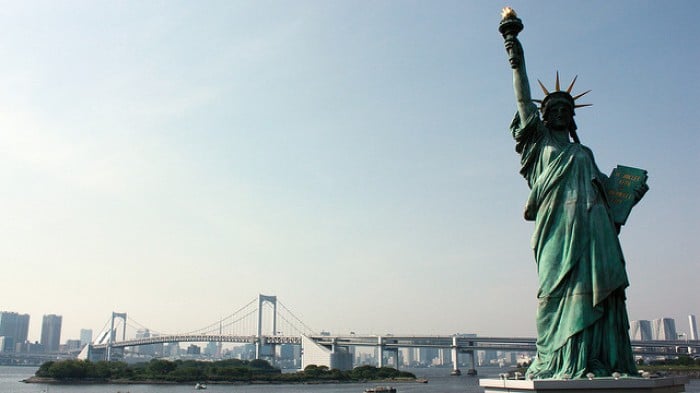
Image credit: Tristan Schultz | Flickr
Odaiba, a waterfront district in Tokyo Bay, features a family-friendly and resort-like atmosphere, making it a great choice for those traveling with children. With less crowded streets and more affordable accommodation options compared to the city centre, Odaiba provides a relaxing and enjoyable experience. Many hotels in Odaiba offer convenient shuttle services to Tokyo Disneyland, making it a popular base for families visiting the theme park.
Things to Do:
- Explore Attractions: Take the Tokyo Bay Shuttle to visit the National Museum of Emerging Science, Aqua City Odaiba, and the iconic life-sized Gundam statue at Diver City Tokyo Plaza.
- Theme Park Fun: Enjoy a day of excitement at Tokyo Disneyland or explore indoor amusement parks like The Sega Joypolis and Legoland Discovery Center Tokyo.
- Iconic Landmarks: Discover the Japanese Statue of Liberty and the futuristic Fuji TV building.
Cons:
Odaiba’s location away from the city centre can make transportation to other parts of Tokyo more expensive and time-consuming.
Transport:
Odaiba is primarily served by the Yurikamome monorail and the privately owned Rinkai Line, providing connections to other parts of Tokyo.
7. Akihabara
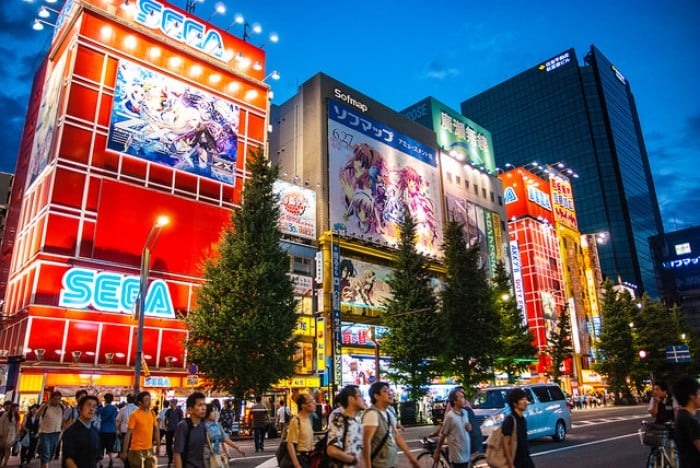
Image credit: Japón Entre Amigos | Flickr
Akihabara, renowned as “Electric Town,” is a haven for anime and manga enthusiasts, offering a vast array of shops and attractions catering to otaku culture. From maid cafes to anime merchandise and electronic stores, Akihabara has something to delight fans of all ages.
Things to Do:
- Maid Cafe Experience: Indulge in the unique experience of a maid cafe at renowned establishments like @home cafe, Maidreamin, Pinafore, Mia-cafe, and Cure Maid Cafe.
- Anime and Manga Shopping: Discover a treasure trove of anime and manga merchandise at Super Potato, Gamers, Radio Kaikan, Mandarake, and Tokyo Anime Center.
- Gaming and Electronics: Explore the latest gaming consoles and electronic gadgets at Akihabara’s numerous electronic stores.
- Themed Dining: Enjoy a meal at the iconic Gundam Cafe, a must-visit for Gundam fans.
Cons:
Despite the fact that Akihabara is a vibrant district during the day, it tends to quiet down in the evenings.
Transport:
Akihabara is well-connected with Akihabara Station, Tsukuba Express Line, and subway lines (Hibiya Line at Akihabara Station and Ginza Line at Suehirochō Station).
8. Asakusa
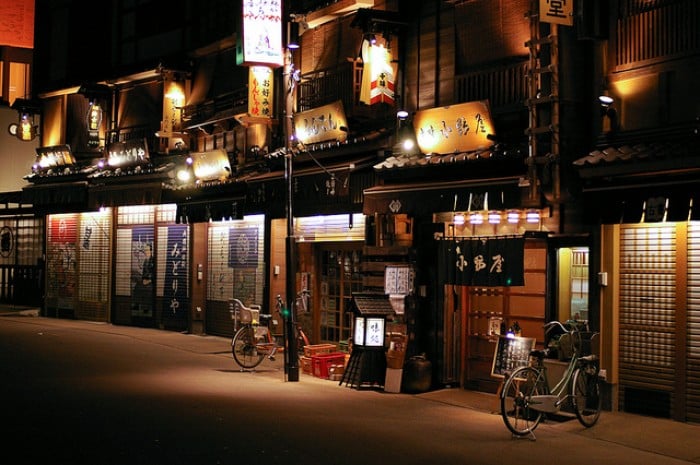
Image credit: Ippei & Janine Naoi | Flickr
In stark contrast to Akihabara’s youthful vibes, Asakusa is one of Tokyo’s oldest districts, offering a charming and authentic Japanese experience. With its “shita-machi” atmosphere, Asakusa provides a glimpse into the traditional side of Tokyo, far from the bustling city centre. The neighbourhood is also known for its affordable accommodation options, ranging from hotels and hostels to traditional ryokans.
Things to Do:
- Temple Exploration: Discover the historic Sensoji Temple, Dempoin Temple, Chingodo Shrine, and Asakusa Jinja.
- Traditional Shopping: Explore the vibrant Nakamise-dori shopping street, filled with traditional crafts and souvenirs.
- Cultural Experiences: Enjoy classic Japanese films at Asakusa Shin Gekijo and Meigaza for only 1000 yen.
- Local Cuisine: Indulge in Asakusa’s famous tempura at Sansada, Aoi-Marushin, or the century-old Daikokuya.
Cons:
While Asakusa offers a unique experience, it can be quite touristy, especially during peak seasons. Some attractions may be geared towards tourists, so be mindful of potential tourist traps.
Transport:
Asakusa is well-connected by the Tokyo Metro Asakusa Line. For those using the JR Yamanote Line, Ginza Station is approximately a 30-minute walk away.
9. Yanaka
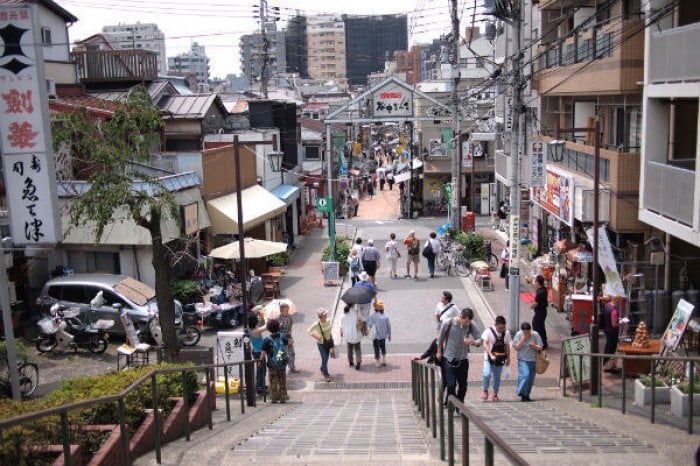
Image credit: yuki | Flickr
Yanaka, a charming neighbourhood known for its nostalgic atmosphere, offers a more authentic and less touristy experience compared to Asakusa. With its winding alleys, family-run restaurants, and historic temples, Yanaka captures the essence of traditional Tokyo. The neighbourhood is also famous for its adorable cat population, adding to its quaint charm.
Things to Do:
- Step Back in Time: Explore Yanaka Ginza, the neighborhood’s main shopping street, which retains its Edo-period charm.
- Discover Historic Sites: Visit scenic Nezu Shrine, Tenshin Okakura Memorial Park, Anritsuji Temple, Tennoji Temple, and Yanaka Cemetery.
- Panoramic Views: Enjoy breathtaking views of Mount Fuji from Fujimi Hill.
Cons:
Yanaka is not known for its vibrant nightlife, so it may not be the best choice for those seeking a lively party scene.
Transport:
Yanaka is conveniently served by Nippori Station, providing easy access to other parts of Tokyo. For travellers arriving from Narita Airport, the Narita Express train offers a direct route to Nippori Station.
Also Read: 24 Fun Things to Do in Tokyo on Your First Visit
Japan offers a diverse range of experiences, from serene temple walks to thrilling shopping adventures. No matter your interests, you’re sure to find the perfect Tokyo neighborhood to suit your needs!




